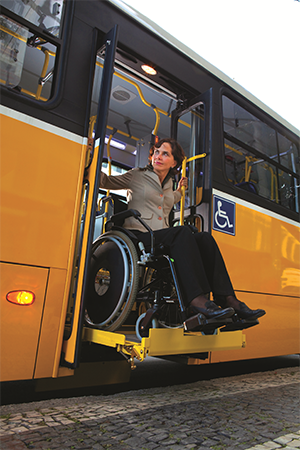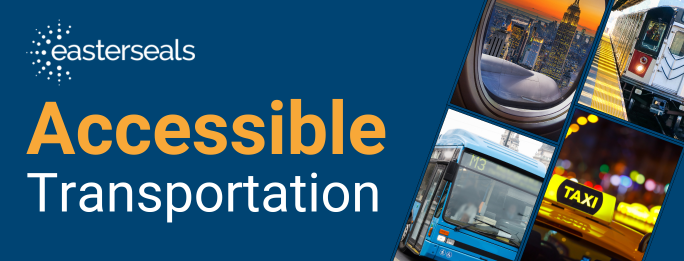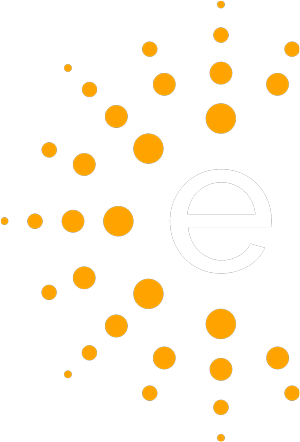
How to Find and Use Accessible Transportation in Your Community
 A woman in a wheelchair on a bus lift looking off to her right
A woman in a wheelchair on a bus lift looking off to her right
For many people with limited mobility, planning travel can be frustrating… especially when transportation is not accessible or available. To spread the word about accessible transportation in all communities, Easterseals Project Action Consulting – a training and technical assistance center – shares the following tips and potential solutions:
How do I find a ride?
First, think through your needs and what you want to accomplish.
- Are you traveling with family or a friend, a personal assistant, caregiver, or with a service animal? The number of travelers may affect which form of transportation you might take.
- When and where are you traveling?
- Where are you going?
Then, explore the various types of transportation available in your community, and consider calling the 2-1-1 service to receive information about the transportation available in your location.
Some options may include:
- Fixed Route: Buses and rail systems that run on a predetermined route on a fixed schedule;
- Taxis: Some taxis are accessible and may provide paratransit trips;
- ADA Complementary Paratransit Service: This is for people who, due to disability, cannot use public transportation like buses and rail systems. This service complements the fixed route in hours of operation and service area;
- Flex Route: Flex routes operate on a fixed route, with published bus routes, but will deviate from that route a small distance to provide door-to-door service to those that need additional assistance;
- Human Service Transportation: An array of transportation service options for people with disabilities and older adults that vary based on their communities. These services could range from mileage reimbursement, to individual transportation requests.
What skills are needed to use public transportation?
To use a fixed route service, passengers should be able to, within a reasonable level of effort:
- Get and remember transit system information;
- Travel to the transit stop or station;
- Enter and exit transit stations;
- Locate and recognize which bus or train to take;
- Recognize destination
What is ADA Complementary Paratransit and am I eligible?
The ADA Complementary Paratransit service is available for people with disabilities who are unable to use fixed-route transportation. Those eligible for the service fall into one of three categories:
- People with disabilities that are unable to use a fixed route service;
- People with disabilities that have the ability to use accessible fixed route services but the service available is inaccessible;
- People with disabilities that are unable to travel to or from a station or a bus stop
In order to use the ADA Complementary Paratransit service, you may have to go through an eligibility process, which can include a paper or electronic application, confirmation of disability, interview, functional physical assessment, functional cognitive assessment, and path of travel assessment.
Contact Easterseals to ask questions you may have about accessible transportation.
Learn more about what Easterseals Project Action Consulting is doing to promote accessible transportation.
For information and technical assistance, email espaconsulting@easterseals.com






 “Streaming is both accessible and not accessible,” Evans said. “The streaming part itself is accessible, in that it allows me to make my own schedule, and I can work it around my disabilities. However, the inaccessible part is the demand for content creators to constantly be networking, attending events and continuously pushing out content. I cannot attend events, and if I can they’re incredible stressful, so all my work networking has basically been done online, which thankfully is becoming a more acceptable side of content creation.”
“Streaming is both accessible and not accessible,” Evans said. “The streaming part itself is accessible, in that it allows me to make my own schedule, and I can work it around my disabilities. However, the inaccessible part is the demand for content creators to constantly be networking, attending events and continuously pushing out content. I cannot attend events, and if I can they’re incredible stressful, so all my work networking has basically been done online, which thankfully is becoming a more acceptable side of content creation.” “I must say over the years it has become less and less accessible for me,” Martínez said. “SMA (Spinal Muscular Atrophy) causes strength, endurance and mobility loss as time passes. I can’t use a physical keyboard as I used to, so it’s been years now with an on-screen keyboard. Voice dictation doesn’t work well for me due to my voice being inconsistent, not to mention my accent. In English it can go from totally wrong to acceptable. In Spanish, my native language, it works better.”
“I must say over the years it has become less and less accessible for me,” Martínez said. “SMA (Spinal Muscular Atrophy) causes strength, endurance and mobility loss as time passes. I can’t use a physical keyboard as I used to, so it’s been years now with an on-screen keyboard. Voice dictation doesn’t work well for me due to my voice being inconsistent, not to mention my accent. In English it can go from totally wrong to acceptable. In Spanish, my native language, it works better.” “What drew me to consulting was the opportunity to leverage my unique perspective as both an able-bodied and disabled gamer to improve the gaming experience for others,” Lane said. “I can share the frustrations I’ve faced as a disabled gamer and use that knowledge to advocate for better accessibility features. Companies and studios that I work with go the extra mile to make sure I have everything I need to succeed.”
“What drew me to consulting was the opportunity to leverage my unique perspective as both an able-bodied and disabled gamer to improve the gaming experience for others,” Lane said. “I can share the frustrations I’ve faced as a disabled gamer and use that knowledge to advocate for better accessibility features. Companies and studios that I work with go the extra mile to make sure I have everything I need to succeed.”





Connect with us on social media